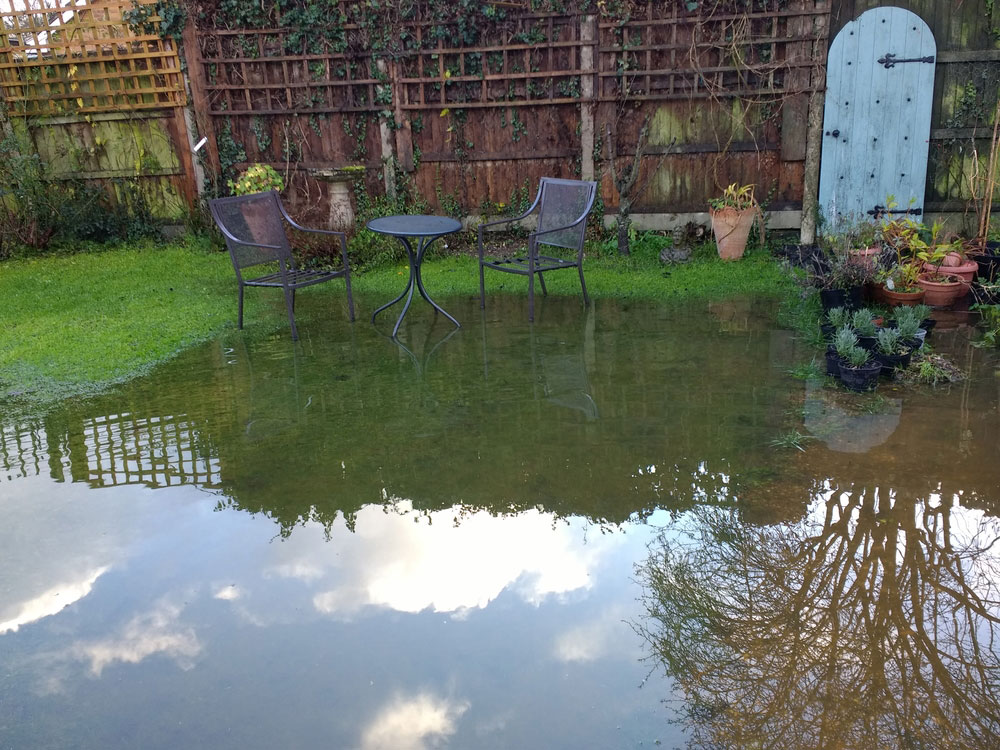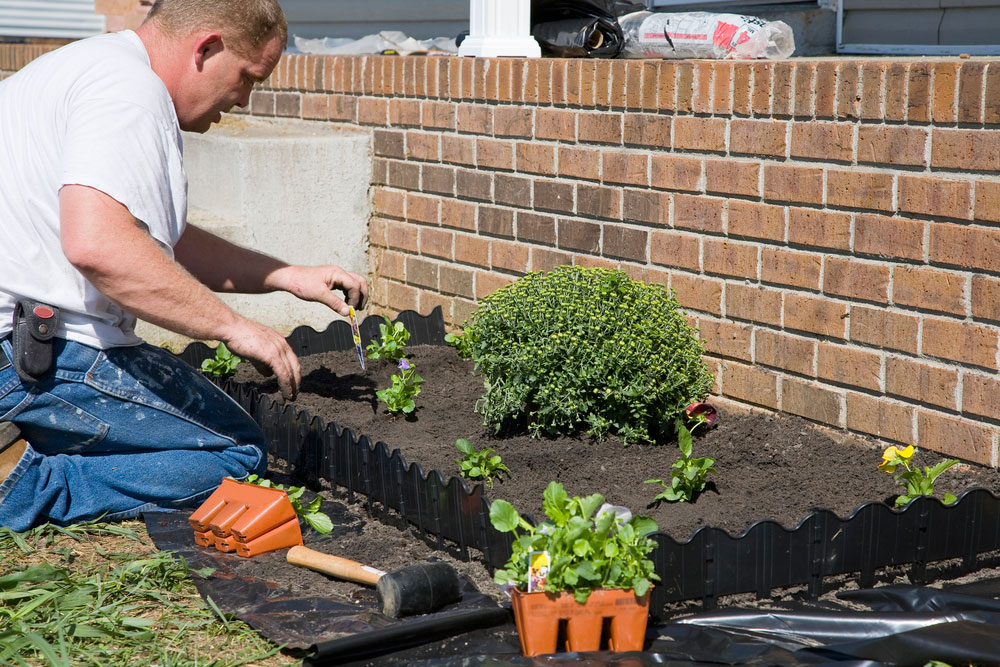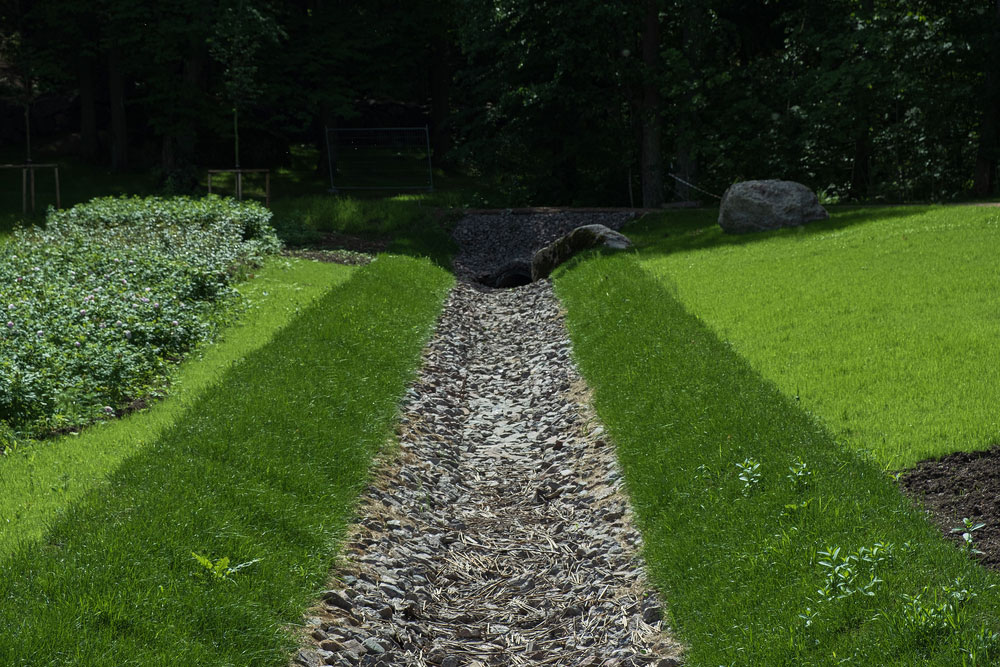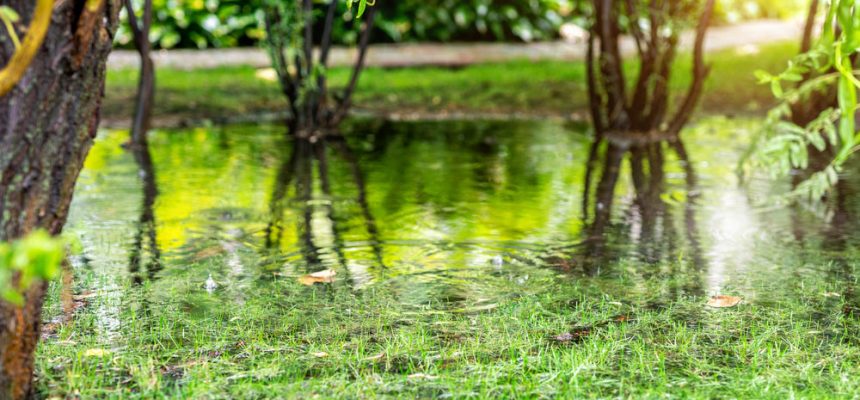Floods have been rising in recent years due to more extreme weather events caused by climate change, and there are steps we can take to help reduce the potential damage. Landscaping choices can make a huge difference in mitigating flood risks, and they don’t have to be expensive or difficult. Below, we’ll provide insight into how smart landscaping decisions can help protect your property from flooding and what you, as a homeowner or business proprietor, can do to contribute to the fight against floods.
Landscape Design to Prevent Flooding

When it comes to landscape design, there are several things you can do to help prevent flooding. This include:
Choosing natural turf over artificial turf
There are many reasons to choose natural turf over artificial turf when it comes to landscape design. Natural turf is more aesthetically pleasing, environmentally friendly, and can help prevent floods. It allows water to penetrate the soil, which helps to reduce run-off and can help filter pollutants from storm water. It also helps to reduce erosion and can provide a buffer against flooding. Artificial turf, on the other hand, does not allow water to penetrate the surface, which can lead to increased run-off and erosion.
Encouraging soil and other elements that absorb water

Several landscaping choices can help prevent flooding by encouraging soil and other water absorbance, for example, planting trees, shrubs, and other plants with deep roots that help anchor the soil and absorb excess water. You can add mulch and compost to your garden beds to help with water retention. Another way to encourage absorption is by creating berms, swales, and rain gardens designed to catch and hold water on your property.
Additionally, use permeable materials for your paving, such as crushed stone, gravel, or porous pavement. These materials allow water to seep into the ground rather than run off into nearby bodies of water. Rain barrels and cisterns are also a great way to capture and store rainwater for later use.
Keeping grass instead of paving
If you’re thinking about redesigning your landscape to prevent flooding, one option is to keep grass instead of paving. Paving prevents water from seeping into the ground, which means that rainwater will run off of it and into areas already prone to flooding. Grass, on the other hand, allows water to seep in and helps absorb some excess water. This can help reduce the amount of runoff and help to prevent flooding in areas prone to it.
Adding drainage options

Several drainage options can be added to your landscaping to prevent flooding. Some of these options include:
- Installing a French drain: a French drain is a type of drainage system used to collect and remove water from an area. It typically consists of a perforated pipe placed in a gravel or other porous material bed.
- Adding rain gutters: rain gutters are a great way to collect and redirect runoff from your roof. They can be installed along the edge of your roof and directed towards a specific area, such as a garden bed or lawn.
- Installing barrier systems: various barriers can be installed around your property to prevent water from entering. These include things like retaining walls, berms, and swales.
These are just a few drainage options that can be added to your landscaping to prevent flooding. Adding any of these features will help manage the flow of water and add an aesthetic appeal to your yard.
Choosing sensible materials
When choosing materials for your landscaping project, there are many different things to consider. One is the material’s porosity, which is how well it absorbs water. Another is permeability, or how easily water flows through the material. You’ll also want to consider the material’s weight and how stable it is when saturated with water.
Some good choices for absorbent materials include mulch, wood chips, and peat moss. Sand and gravel are less absorbent but can still help drainage. For permeable materials, gravel, and crushed stone are good options. Avoid using concrete or asphalt, increasing runoff and exacerbating flooding problems.
Installing a rain barrel
Installing a rain barrel is a great way to reduce your water bill and save water for your garden. A rain barrel is basically made up of a container collecting rainwater from your gutters, storing it for a later date. They’re usually made of plastic or metal, and most have a spigot near the bottom so you can easily access the water. Installing a rain barrel is a fairly simple process.
Conclusion
Proper planning and design of your landscape can help reduce the risk of flooding in your area. By understanding how factors like soil type, rainwater runoff, and drainage systems work together to affect flooding, you can create a more resilient landscape better prepared for heavy rains or storms.
Additionally, implementing strategies such as terracing land or planting native vegetation can significantly reduce flood damage while providing an aesthetically pleasing outdoor environment. Ultimately, it is important to understand all aspects of landscaping when designing with floods to have a safe and functional space no matter what Mother Nature brings. Talk to Groby Landscapes on how we can create a sustainable garden design for you that will help with flooding.
Posted in Landscaping, Landscaping Techniques, News
